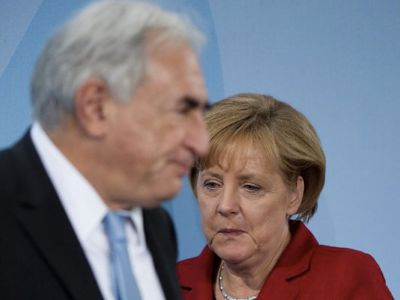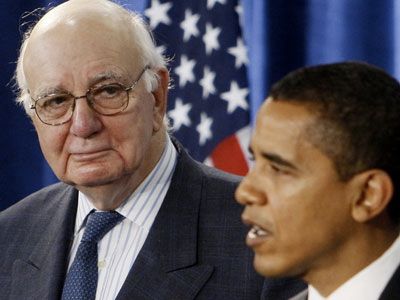
Iran started to build a long-planned pipeline to export natural gas to Europe with an investment of at least 1.3 billion euros ($1.55 billion), state television reported today.
Iran plans to complete its section of the pipeline by 2013, the TV network said, without citing a source. The system will pass through Turkey and have a capacity of as much as 110 million cubic meters of gas a day, it said. The route of the pipeline is unclear.
An earlier, unrealized version of this project was to extend to Greece, Italy, Switzerland, Austria and Germany, according to details disclosed in September 2008. It was not immediately clear if the government intends the new project as an alternative to the planned Nabucco pipeline, a 7.9 billion- euro network for transporting gas from the Caspian Sea through Turkey to Europe. Iran already operates a pipeline to Turkey, its western neighbor.
Iran, home to the world’s second-largest gas reserves after Russia, has for years been under United Nations sanctions and U.S.-imposed restrictions on foreign investment. The sanctions aim to deter Iran from pursuing a nuclear weapons capability. These economic and financial constraints have made it difficult for Iran to fulfill its energy plans and have hampered foreign investment in the country.
Iran insists that its nuclear program is for civilian purposes.
The Iranian section of the pipeline to Europe will stretch from the South Pars gas field to the Bazargan border post with Turkey, for a distance of about 1,850 kilometers (1,150 miles), state television said.
Of the 1.3 billion euros that Iran has allocated to its construction, about 825 million euros will come from the Oil Ministry and the rest from other sources, the Tehran-based Pool newspaper reported, without elaborating or disclosing the source of the information.
Ashgabat, 29 June 2010 (nCa) — Gazprom, the largest natural gas company in the world and the mainstay of the Russian economy, is in deep crisis. By Gazprom’s own estimates, it will not be able to reach the pre-crisis level until 2013. It is a conditional assessment: To climb back to its former position, Gazprom needs to make sure that there is no alternate route for gas supplies to Europe.This, in essence, is the reason why Russia supported the UN Security Council sanctions on Iran.
Shrinking Gazprom
In May 2008, Gazprom’s market capitalization exceeded US $ 350 billion. Its current market capitalization is US $ 140 billion, a dwarfish 40% of its former self. [1]
The oil sector of Russia is showing signs of coming out of the last year’s financial and economic crisis but the gas sector is still sluggish. By the end of 2009, the oil production and export of Russia increased marginally but the gas exports fell by 11% and Gazprom production decreased by 16% because of lack of gas demand. [2]
Although Gazprom claims to have practical plans to regain its former position by 2013, the abundant availability of cheaper shale gas in the US, the advancement in LNG liquefaction and transportation technologies and the prospects of accessibility of vast volumes of shale gas in Europe are all stacked against Gazprom ambitions.
The markets where Gazprom has near monopoly – the European markets – are not showing any signs of substantially increasing their imports from Russia.
On the other hand, the markets that are ready to consume more gas – China and Iran – are not connected with Russia by any pipeline system.
Even in the captive Russian market, Gazprom is being challenged by rising stars such as Rosneft and Novatek. Gazprom traditionally had 85% share of the domestic market but by the end of 2009 it had shrunk to 75%. [3]
Suicidal Gazprom
Faced with sharply declining export market, Gazprom did the thing only a Russian giant could do: It shot itself in the foot.
Gazprom stopped taking Turkmen gas in April 2009 without giving an adequate notice for shutting down of gas intake. As a result, the accumulated pressure in the pipeline system led to a string of accidents in Turkmenistan, causing severe damage to an expensive compressor station, a segment of the main trunk, and 20 gas wells.
This suicidal act of Gazprom prompted Turkmenistan to quickly build the second pipeline (Daulatabat-Khangiran) to Iran, increasing the export capacity to 25 bcm. Currently the combined export from both pipes (Korpeje-Kurtkui and Daulatabat-Khangiran) is around 9 bcm. It will reach 14 bcm in the coming winter, and to 20 bcm in foreseeable future.
At the time of the accident caused by Gazprom, Turkmenistan was already building a pipeline to China, which came into operation in December 2009. The present flow of gas from this pipe is 5 bcm. It will be raised to 13 bcm by the end of 2011 and then there would be sharp increase in the next two years.
The existing arrangements between Turkmenistan and China envisage eventual annual export of 40 bcm but the negotiations are underway to go even beyond that. The ultimate exports of Turkmen gas in the Chinese direction could be substantially more than 40 bcm. [4]
Increasing production
Gazprom plans to produce 519.3 bcm this year. The target for 2011 is 528.6 bcm, and for 2012 – 542.4 bcm. The idea is to reach the pre-crisis levels by 2013. [5]
However, Gazprom has lowered its gas export forecast for 2010 from 160.8 to 145 bcm, a decrease of nearly 10%. [6]
The exports this year would be just 4.35 bcm more than the 140.65 that Gazprom exported last year.
Decreasing prices
While there are efforts to increase production, there is nothing Gazprom can do to increase the export prices, or even hold them at the previous level.
The average forecast contract price has been lowered from US $ 326 to 308 per thousand cubic meters. [7]
Nord Stream and South Stream
Gazprom is relentlessly pushing for two hulks: Nord Stream and South Stream. Both of these projects are based on the assumption that Russia will always be able to remain the near-monopoly supplier of gas to Europe.
Gazprom expects that within the next decade the requirement of gas in Europe will increase by nearly 200 bcm or about 50%. [8]
The combined capacity of both strings of Nord Stream would be 55 bcm. [9]
The capacity of South Stream would be 63 bcm. [10]
Taken together, Nord Stream and South Stream will increase the gas export capacity of Russia in the European direction by 118 bcm.
In other words, Gazprom has the ambitions to meet about 60% of the additional demand of gas in Europe within the next ten years.
Encroachment in Ukraine
Gazprom chief Alexi Miller said during the annual meeting of the shareholders in Moscow on 27 June 2010 that a merger between Gazprom and Ukrainian utility Naftogaz is “historically predetermined.” He said that it would “increase efficiency for the Ukrainian gas industry and the industries that are large consumers of the gas.” Miller also said that “Naftogaz could gain access to gas fields holding as much as 35 trillion cubic feet of gas as an incentive for the merger.” [11]
With Yanukovich leading Ukraine and Boyko back to the oil and gas ministry of Ukraine, this could not be just empty talk.
Iran Pipe to Europe
While Russia is putting together an elaborate and meticulous plan to remain overseer of the gas market in Europe, Iran has started building its own pipeline in the European direction.
The Iranian pipeline will have capacity of 40 bcm, and expected cost is around US $ 1.5 billion. It is expected to be completed by 2013. It will start from South Pars field and terminate at Bazargon border point with Turkey, a distance of about 1850 km. The oil ministry of Iran will provide some 63% of funding for the project and the rest will come from other sources. [12]
Frightened Gazprom
Iran is already exporting some gas to Europe and that capacity would increase within the next three years. Moreover, Iran has two pipelines connecting to the gas network of Turkmenistan, and by default, Central Asia. This fact is especially significant if we consider that Iran produces enough gas to meet its domestic demands and any volumes it imports from Turkmenistan are exported to Turkey.
Because of flexible methods of negotiation, Iran can offer betters terms to European buyers of gas. In fact, the existing supply situation and the pipeline infrastructure are such that even today Iran can either supply or transit at least 15 bcm of gas to Europe.
The lucrative and politically pragmatic markets of central and Eastern Europe are in easy reach of Iran, and some buyers are already in talks with Iran.
If Iran starts exporting its own gas and transiting Central Asian gas to Europe, the entire gas reserve of Russia would be at risk of becoming ‘stranded gas.’
This possibility is not acceptable to Gazprom.
Gazprom’s fear of receding into irrelevance and Putin’s economic patriotism are the factors that compelled Russia to vote for the fresh sanctions against Iran.
References:
1. Gazprom in crisis: a chance for reform by Anders Åslund, European Energy Review, 26 April 2010 (http://www.europeanenergyreview.eu/index.php?id=740&id_referer=1898&id_artikel=1898)
2. Ibid
3. Ibid
4. Press briefing by the foreign office of Turkmenistan on 28 June 2010.
5. Dow Jones, 9 June 2010 (http://www.foxbusiness.com/story/markets/industries/energy/correctgazprom-plans-reach-pre-crisis-output-level/)
6. Xinhua, 23 June 2010 (http://english.people.com.cn/90001/90778/90858/90865/7036298.html)
7. Ibid
8. Gazprom website (http://www.gazprom.com/production/projects/pipelines/nord-stream/)
9. Ibid
10. Gazprom website (http://www.gazprom.com/production/projects/pipelines/south-stream/)
11. UPI, 28 June 2010 (http://www.upi.com/Science_News/Resource-Wars/2010/06/28/Naftogaz-Gazprom-link-destiny-Miller-says/UPI-47021277734221/)
12. Bloomberg, 7 June 2010 (http://www.bloomberg.com/news/2010-06-07/iran-starts-building-first-gas-pipeline-to-europe-commits-1-55-billion.html)





















